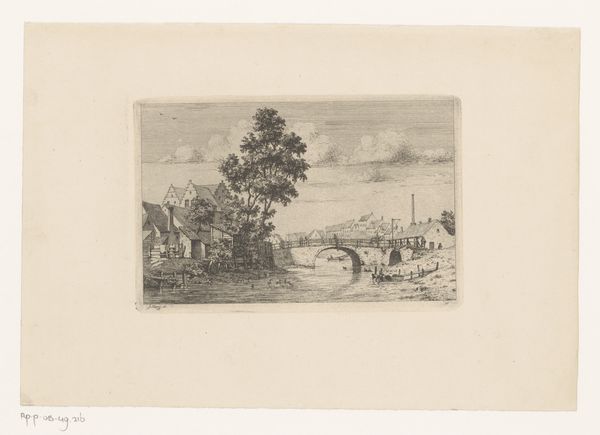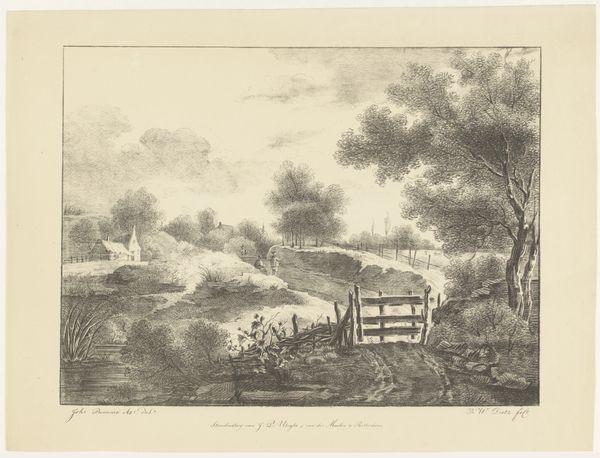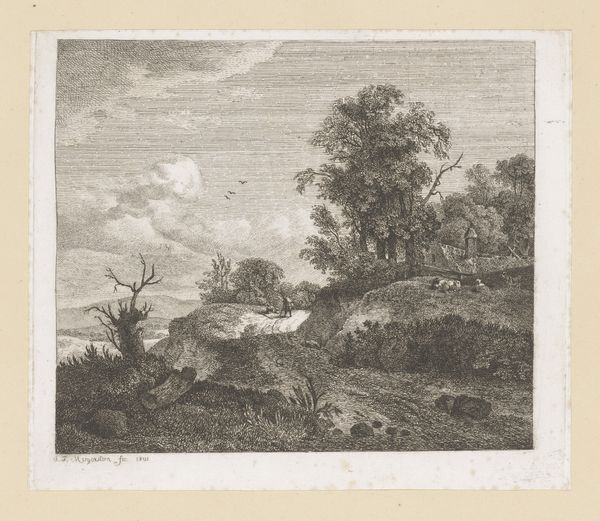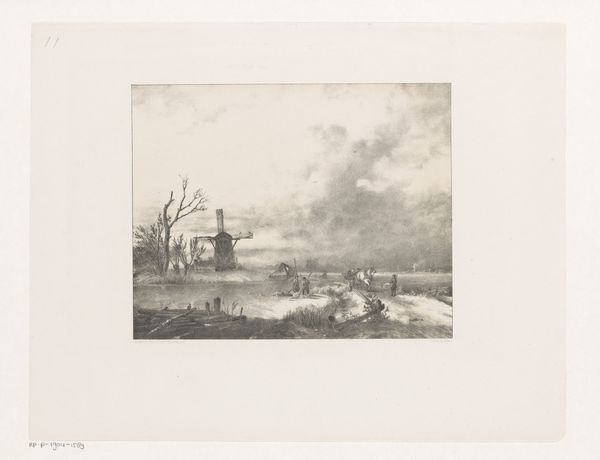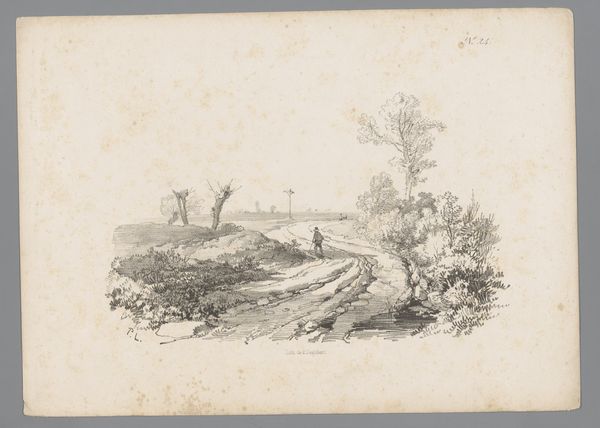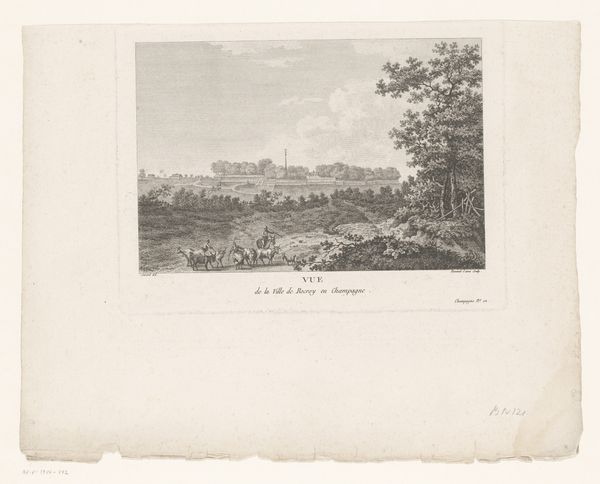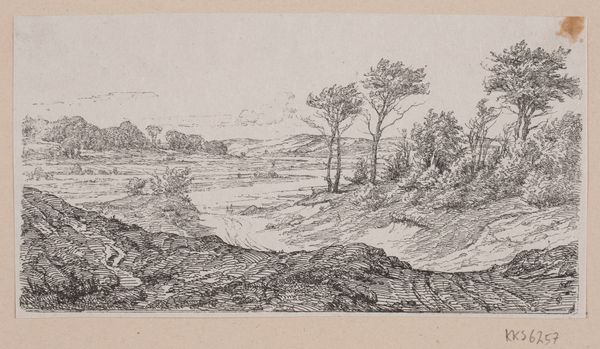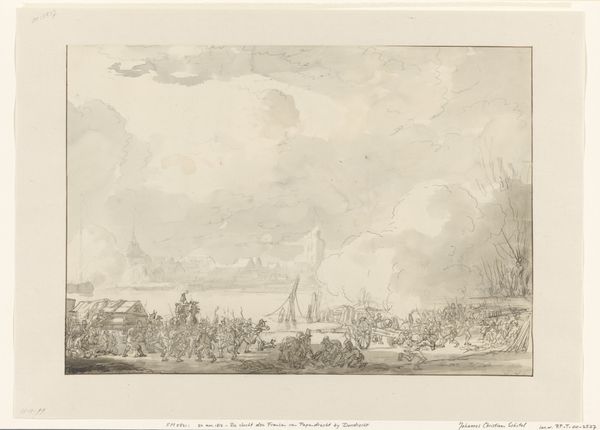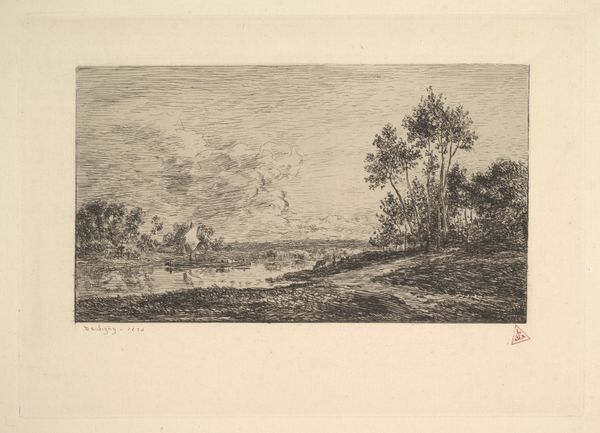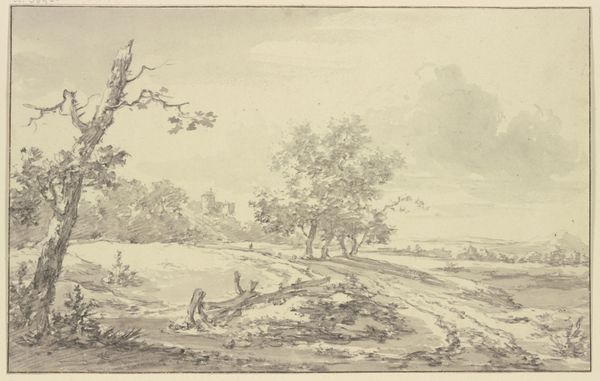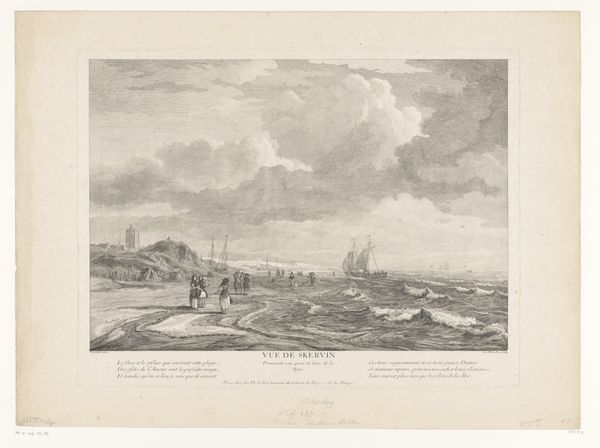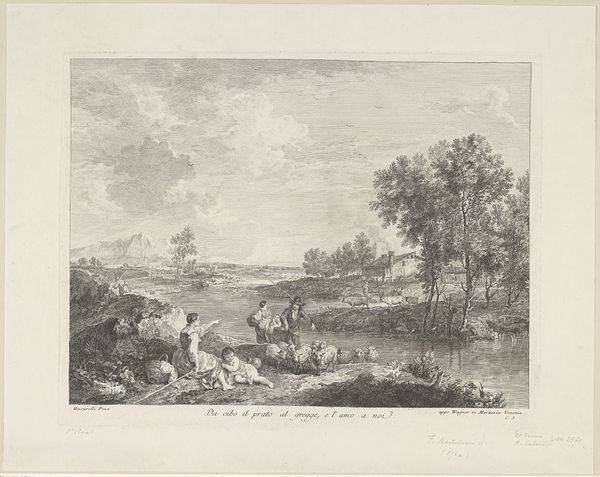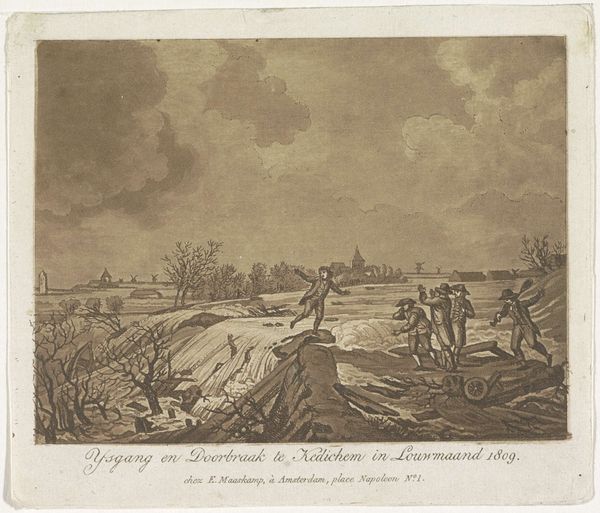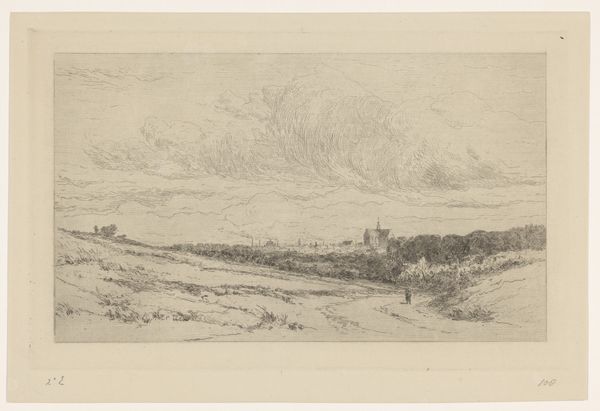
print, engraving
# print
#
landscape
#
romanticism
#
history-painting
#
engraving
Dimensions: height 254 mm, width 342 mm
Copyright: Rijks Museum: Open Domain
Curator: Before us is “Overstroming van de Linge bij Kedichem,” or “Flooding of the Linge River at Kedichem,” an engraving crafted in 1809 by Reinier Vinkeles, currently held at the Rijksmuseum. Editor: It’s instantly unsettling, wouldn't you say? The monochromatic palette emphasizes the dynamism and chaotic surge of water consuming the landscape. A scene of profound upheaval rendered in delicate lines. Curator: Indeed. Vinkeles masterfully employs the engraving technique to create varied textures; the smooth, reflective surface of the water contrasts sharply with the rough, distressed terrain and tumultuous skies above. Editor: Look closer, and we witness humanity struggling against nature. How was the print itself fabricated and disseminated during that time, and how accessible would such images have been to a broader audience who had no material connection to the depicted scenes? Curator: A compelling question. The stark contrasts underscore the themes prevalent in Romanticism: man versus nature, the sublime terror, the drama. Semiotically, we can interpret the rising waters as symbolic of the shifting political landscape. Editor: Right, and that political landscape informs how Vinkeles depicts labor; are the workers here common villagers? What resources and know-how were available to assist and preserve life in the wake of such tragedy? Were people aware that these events can and will inevitably occur? The print could also tell us a lot about how disaster was handled during the time, revealing hierarchies between landowners and laborers, the authorities, and their overall preparedness, for example. Curator: The deliberate composition also guides our gaze, as it creates a sense of linear perspective, with the church tower on the distant horizon reminding us of order disrupted by the raging river. The interplay of light and shadow creates an emotional depth within a monochromatic work. Editor: Thinking about Vinkeles' decision to render it as an engraving forces a reflection on process. An engraving demands planning, physical precision. The medium itself adds to the image’s lasting impression and the time taken in its construction encourages deeper, more careful attention on the part of the consumer. Curator: I leave with a stronger impression of both its formal qualities, and this scene now seems more a testament to enduring artistic principles of design, form, and light, which is a striking fusion of observation and the hand's precise capabilities. Editor: And I'm intrigued by the hidden labor inherent in landscape depictions. An act that seems inherently objective may actually require massive support, preparation, infrastructure, resources and even bias.
Comments
No comments
Be the first to comment and join the conversation on the ultimate creative platform.
